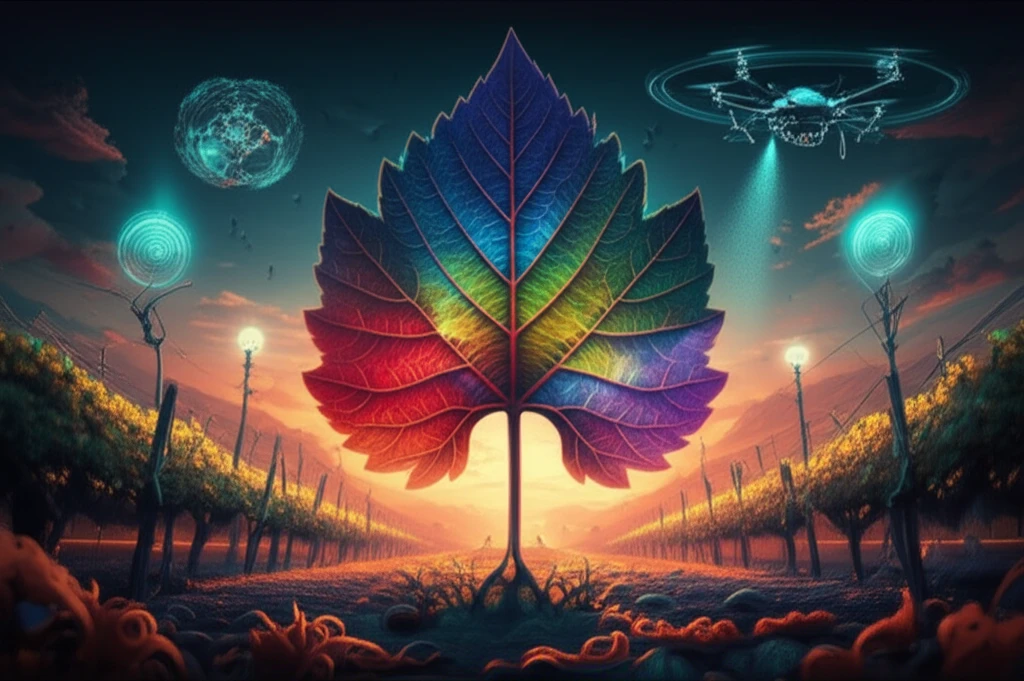
Unlocking the Secrets of Grapevines: How Tech is Helping Farmers Thrive
"From Field to Forecast: Revolutionizing Grape Growing with Cutting-Edge Technology"
In the ever-evolving world of agriculture, technology is no longer a futuristic concept—it's a necessity. Farmers are constantly seeking innovative solutions to improve crop yields, conserve resources, and adapt to changing environmental conditions. One such advancement is the use of hyperspectral imaging, a technique that provides a detailed look at the health and well-being of plants. This technology, when combined with other methods, is revolutionizing how we understand and manage crops like grapevines.
Grapevines, known for producing some of the world's finest wines and delicious table grapes, require precise care to thrive. The health of these vines is often affected by factors like water stress, which can significantly impact the quality and quantity of the harvest. Traditionally, assessing the water content of grapevines involved time-consuming and often inefficient methods. However, thanks to advancements in technology, a new approach is emerging that is both effective and sustainable.
This article delves into the fascinating world of using reflectance and gray-level texture analysis to predict water content in grapevines. We will explore the science behind this approach, the technology involved, and the benefits it offers to both farmers and the environment. By understanding these advancements, we can gain a deeper appreciation for how technology is shaping the future of agriculture and helping to ensure a more sustainable and productive food system.
Decoding Grapevine Health: The Science Behind Reflectance and Texture Analysis

At the heart of this technological breakthrough lies a combination of hyperspectral imaging, reflectance analysis, and gray-level co-occurrence matrix (GLCM) texture features. Hyperspectral imaging captures detailed spectral data by measuring the amount of light reflected from the grapevine leaves across various wavelengths. This data provides valuable information about the leaves' condition, including their water content.
- Hyperspectral Imaging: Captures detailed spectral data, measuring light reflection across wavelengths.
- Reflectance Analysis: Studies light reflection patterns to determine leaf health and water content.
- Gray-Level Co-occurrence Matrix (GLCM): Analyzes texture features, offering insights into the spatial arrangement of leaf surfaces.
The Future of Viticulture: Embracing Technology for a Sustainable Harvest
As technology continues to evolve, so too will the way we cultivate and manage crops like grapevines. The use of hyperspectral imaging and related analytical techniques represents a significant step towards precision agriculture, offering a sustainable and efficient approach to crop management. By embracing these innovations, farmers can enhance crop yields, improve resource efficiency, and contribute to a more environmentally friendly agricultural industry. The combination of scientific research and technological advancements will undoubtedly play a vital role in the future of viticulture, ensuring the continued production of high-quality grapes and wines for generations to come.
